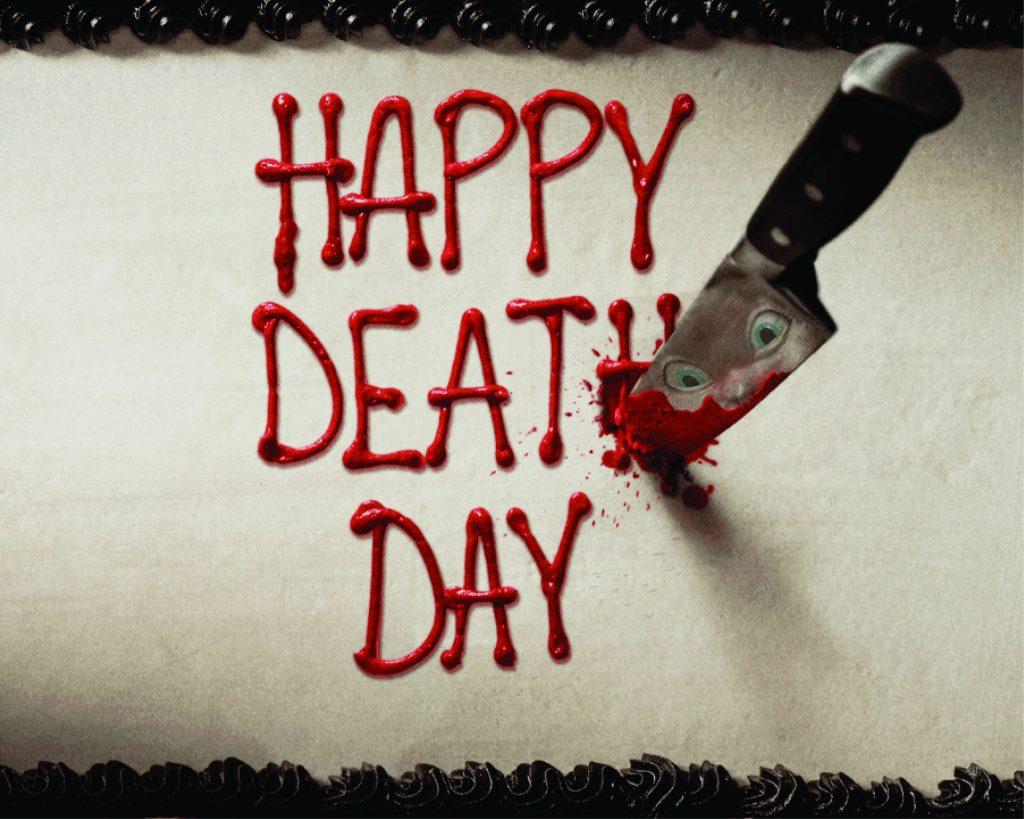What would it be like to experience déjà vu every single day until you finally realize that you are actually stuck in an inescapable time loop? On November 9, “Happy Death Day” made its debut as a horror-comedy film, bringing into the theaters not only a humorous sense of thrill but also a sturdy backbone of meaningful life lessons. Although the movie received slight criticism for having some similar concepts to the film “Groundhog Day,” the movie started strong, hitting an estimated 15-20 million dollars in the box office, even before its release.
The film first shines the spotlight on a college student named Tree Gelbman, who awakens on her birthday in the dorm room of her classmate Carter Davis after becoming inebriated the previous evening. She spends her birthday being her egotistical self by ignoring her classmates, former hook ups, and even her dad who invites her to a birthday meal. On that night, while heading to a surprise party, she is lured into a tunnel where she is murdered by a suspiciously hooded figure, only to wake up in Carter’s room on her birthday, again. Believing that this time she could easily relive the day and escape the murderer, she avoids the tunnel and heads straight to the party, but is assassinated again. After the second time, she realizes that she is stuck in a time loop that can only be escaped by discovering the murderer’s identity.
At first sight, it may be easy to dismiss such movie as an ordinary horror film with the occasional gore and the numerous intense murder scenes repeated many times. However, unlike what many expect, this film not only has violence on a milder scale, but also illustrates some of the most valuable life lessons that effectively teach the audience how important it is to possess certain traits like selflessness.
As ironic as it gets, what seemed to be truly valued in this movie was not the gore and blood like most horror films, but rather the motives and lessons that could be learned from the bizarre journey undertaken by the protagonist. In other words, while barely any blood and gore was shown throughout the movie, the movie attempted to reach out to the audience and encourage them to note what kind of person they truly are, and if there are any, try to mend the flaws in their personality.
Apart from the motives earned from the movie, it was further developed through the expressive presentation of eerie music and settings that could easily immerse the audience into the film. For instance, the creepy twist to the originally cheerful song “Happy Birthday” from the beginning immediately sets a suspicious, yet intriguing atmosphere to the film. Furthermore, the dark, cryptic setting of night where it is nearly impossible to escape danger adds on to the creepiness. Such effective establishment of setting and sound made the movie not only intense, but also extremely engrossing.
Worthy of receiving kudos for its originality and regard for valuable lessons, “Happy Death Day” not only effectively immerses its audience into its intense horror scenes, but also portrays meaningful lessons throughout. To sum up in one sentence, as the Common Sense Media said this “gleefully silly slasher movie” has a playful spirit, likeable characters, and even some decent life lessons.

